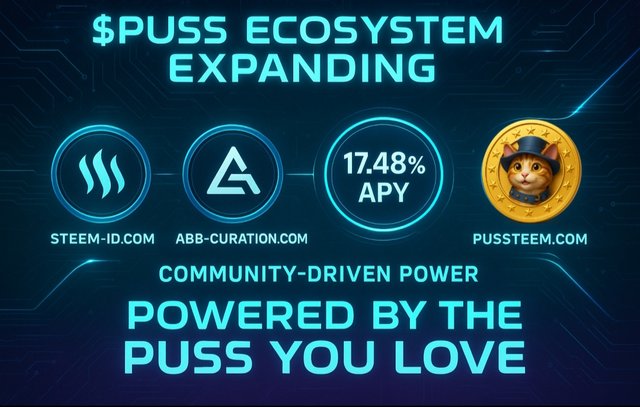Bug Bounty Programs For SPUSS COIN
From its initial launch to current expansions, PUSS COIN has prioritized safety through active bug bounty programs. These bug bounty programs allow security researchers to either report or just degrade a vulnerability before exploitation. This collaborative testing opens security to the public rather than keeping it in the private vault. In serving this purpose, PUSS COIN provides a transparent and protective basis for its DeFi ecosystem.
Using paid bounty programs, white hat hackers are compensated for identifying problems adversely affecting users or functioning of smart contracts. Bad coin incentives maximized to pay bounties, either in stable coins or their native ones, are given by PUSS COIN, in a bid to maximize participation. This collaborative transparency builds trust while maintaining technical excellence. That means that a potential weakness is fixed and the environment is safe, not when the holes have been exploited.
Bug panorama stands on and underlined by PUSS COIN as a matter of status from time to time. Bounty scope and bounty system grow up with the platform. It epitomizes a strong commitment to security, community, and responsible innovation. In DeFi, PUSS COIN remains upfront by making security a community priority.
- BUG BOUNTIES REDUCE LONG-TERM COSTS RELATED TO MAJOR EXPLOITS
PUSS COIN's bug bounty programs serve preventive security measures: finding bugs and fixing them with the community is cheaper than fighting on the post-attack damage side. This allows the team to fix vulnerabilities before they turn into expensive security breaches damaging to users and the platform.
Avoiding major exploits saves financial stability and investment' trust. One unpatched vulnerability can cost millions in losses and can hamper token value and credibility. PUSS COIN thus alleviates this risk through bug bounties, making the project more resilient and reducing the possibility of emergency recovery scenarios or PR crises.
This cost-saving approach allows for more infusion into innovative and developmental activities. Instead of having to divert funds toward damage control, PUSS COIN can pour its resources toward ecosystem expansion, partnerships, and user benefits. So what started as a preventative measure turns potential threats into growth opportunities through bug bounty programs.
- FAST RESPONSE AND PATCHING TIMELINES FOR CRITICAL BUGS
An important focus under PUSS COIN is taking immediate action on the critical bugs discovered using bounty programs. After such bugs are verified, any of high severity are promptly escalated to the core development team, which promotes neutralization of the threat in the shortest possible time, thereby mitigating chances of exploitation or loss to the ecosystem or stakeholders.
Teams dedicated to addressing emergency patches treat such situations with specific deadlines, merging discovery with resolution in the most efficient manner. By addressing issues in a timely fashion, PUSS COIN shows security as important and builds user trust, which leads to active participation from the community.
A speedy response to bugs also shows professionalism and preparedness of the team themselves. It sets the standards for the DeFi industry, showing that PUSS COIN is able to provide a safe environment. This fast response and hierarchical structure ensure and negotiate the long-term sustainability and integrity of the platform with its users, developers, and investors.
- REPORTS KEPT CONFIDENTIAL UNTIL FIXES ARE RELEASED
To prevent a malicious application of security vulnerabilities, PUSS COIN declares all valid bug reports to be kept strictly confidential. This responsible disclosure model ensures that information about vulnerabilities does not liberate itself into the world until after such vulnerabilities are fixed. Henceforth, vulnerabilities will be exploited by potential attackers during this window of time.
The security researcher and developers collaborate within clear terms of confidentiality. The reporting process and the review take place under encrypted channels, keeping communication discreet all the way. This approach safeguards the project while furnishing an assurance that researchers shall be accounted for after remediation.
This way, careful disclosures keep a risk balance with transparency by PUSS COIN. Alternatively, when issues are all set, they present various detailed post-mortems or summaries to the community. This will secure trust without compromising safety, showing to the users that the platform handled the bugs in an ethical and strategic capacity without posing unnecessary threats to the project.
- BOUNTY PAYOUTS ARE MADE IN PUSS COIN OR STABLECOIN
Ethical hacking payouts have a flexible system under PUSS COIN. Researchers can either get their bounty in PUSS COIN, thus supporting the ecosystem, or in stablecoins such as USDT or USDC, which allow for easier value retention. This two-way payout format makes participants feel that they are valued and financially respected for their efforts.
The presence of stablecoins as an option also draws researchers from all over the world who may choose the less volatile reward. Meanwhile, PUSS COIN as a payout option gives contributors a reason to re-invest into the platform while further creating utility and circulation of the token, thus creating real-world use cases for the coin.
Fair and thoughtful payment processes create strong ties with the white-hat community around PUSS COIN. Giving value to flexibility and loyalty makes the project form a healthy give-and-take relationship with these security professionals. This helps in maintaining future engagements and a defense line for outside threats.
The proactive bug bounty programs allow PUSS COIN to halt possible costly exploits, react to imminent threats, protect users through confidential reporting, and remunerate white-hats flexibly. This positioning creates a great security infrastructure fortified around protecting the ecosystem, participation from the community, and a financial assurance base for investor confidence in the dependability and longevity of the project.



https://x.com/prolee_o/status/1922698995211575380
https://x.com/prolee_o/status/1919861903645442267
https://x.com/prolee_o/status/1919861334272885228
https://x.com/prolee_o/status/1919860637137510845
https://x.com/prolee_o/status/1919860129228329350
Note:-
Regards,
@adeljose